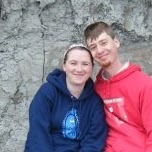Erin K Heiniger
age ~42
from Kirkland, WA
- Also known as:
-
- Erin M Heiniger
- Erin M Kron
Erin Heiniger Phones & Addresses
- Kirkland, WA
- Seattle, WA
- Madison, WI
- New Berlin, WI
Work
-
Company:University of washingtonSep 2012 to Apr 2013
-
Position:Professional staff - limited term
Education
-
Degree:Doctorates, Doctor of Philosophy
-
School / High School:University of Washington2005 to 2012
-
Specialities:Microbiology, Philosophy
Skills
Molecular Biology • Western Blotting • Biochemistry • Bacterial Genetics • Experimental Design • Microbiology • Bacterial Culture • Life Sciences • Data Entry • Polymerase Chain Reaction • Molecular Cloning • Science • Research • Laboratory Skills
Industries
Higher Education
Resumes

Senior Fellow
view sourceLocation:
Seattle, WA
Industry:
Higher Education
Work:
University of Washington Sep 2012 - Apr 2013
Professional Staff - Limited Term
University of Washington Sep 2012 - Apr 2013
Senior Fellow
University of Washington 2005 - 2012
Research Assistant
University of Wisconsin-Madison Oct 2001 - Jul 2005
Research Technician
Professional Staff - Limited Term
University of Washington Sep 2012 - Apr 2013
Senior Fellow
University of Washington 2005 - 2012
Research Assistant
University of Wisconsin-Madison Oct 2001 - Jul 2005
Research Technician
Education:
University of Washington 2005 - 2012
Doctorates, Doctor of Philosophy, Microbiology, Philosophy University of Wisconsin - Madison 2001 - 2004
Bachelors, Bachelor of Science
Doctorates, Doctor of Philosophy, Microbiology, Philosophy University of Wisconsin - Madison 2001 - 2004
Bachelors, Bachelor of Science
Skills:
Molecular Biology
Western Blotting
Biochemistry
Bacterial Genetics
Experimental Design
Microbiology
Bacterial Culture
Life Sciences
Data Entry
Polymerase Chain Reaction
Molecular Cloning
Science
Research
Laboratory Skills
Western Blotting
Biochemistry
Bacterial Genetics
Experimental Design
Microbiology
Bacterial Culture
Life Sciences
Data Entry
Polymerase Chain Reaction
Molecular Cloning
Science
Research
Laboratory Skills
Us Patents
-
Lateral Flow-Based Systems And Methods
view source -
US Patent:20210349087, Nov 11, 2021
-
Filed:Oct 1, 2019
-
Appl. No.:17/278166
-
Inventors:- Seattle WA, US
Joshua BISHOP - Seattle WA, US
Dylan GUELIG - Seattle WA, US
Arielle HOWELL - Seattle WA, US
Sujatha KUMAR - Seattle WA, US
Paul YAGER - Seattle WA, US
Koji ABE - Seattle WA, US
Erin HEINIGER - Seattle WA, US
Samantha BYRNES - Seattle WA, US
Caitlin ANDERSON - Seattle WA, US
Peter C. KAUFFMAN - Seattle WA, US
Maxwell WHEELER - Seattle WA, US -
Assignee:University of Washington - Seattle WA
-
International Classification:G01N 33/558
B01L 3/00
G01N 33/543 -
Abstract:The present technology generally relates to stopped-flow microfluidic devices. Select embodiments of the present technology include microfluidic devices having a first porous element configured to receive a first fluid and a second porous element configured to receive a second fluid. The second porous element can have one or more legs overlapping with the first porous element. The device can be configured such that (a) delivery of the first fluid to the first porous element causes the first fluid to flow along the length of the first porous element without substantially wetting the one or more legs, and (b) delivery of the second fluid to the second porous element causes the second fluid to flow into the overlapping regions of the first porous element, thereby substantially stopping flow of the first fluid along at least a portion of the first porous element.
-
Proximity-Enhanced Nucleic Acid-Amplified Protein Detection
view source -
US Patent:20180119202, May 3, 2018
-
Filed:Nov 1, 2017
-
Appl. No.:15/801223
-
Inventors:- Seattle WA, US
Joshua Bishop - Seattle WA, US
Erin Heiniger - Seattle WA, US -
International Classification:C12Q 1/68
G01N 33/543 -
Abstract:The present technology is related to methods and compositions for detecting, and optionally quantifying, one or more analytes of a sample using nucleic acids. In some embodiments, the methods include generating a complex of a plurality of peptides, an analyte, a first nucleic acid, and a second nucleic acid, each nucleic acid conjugated to a binder peptide. In addition, an immobilizer peptide can be immobilized to a substrate. If the binder peptides are bound to the analyte, the method further includes hybridizing a segment of the first nucleic acid to a segment of the second nucleic acid and amplifying the hybridized nucleic acids to generate a plurality of amplicons. Moreover, the generated amplicons indicate that one or more analytes has been detected. A number of generated amplicons can be analyzed to quantify one or more of the bound analytes.
-
Systems For Cell Lysis And Analyte Detection And Associated Methods
view source -
US Patent:20170131211, May 11, 2017
-
Filed:Nov 10, 2016
-
Appl. No.:15/348926
-
Inventors:- Seattle WA, US
Joshua Bishop - Seattle WA, US
Joshua Buser - Seattle WA, US
Louise Lyth Hansen - Seattle WA, US
Erin K. Heiniger - Seattle WA, US
Enos Kline - Seattle WA, US
Sujatha Kumar - Seattle WA, US -
International Classification:G01N 21/64
C12Q 1/68 -
Abstract:The present technology relates generally to systems for disrupting biological samples and associated devices and methods. In some embodiments, the system includes a vessel configured to receive a biological sample and a cap assembly that includes a porous membrane having a receiving region and a detection region. When the cap assembly is detachably coupled to an open end portion of the vessel, the system can be moved between a first orientation and a second orientation. When the system is in the first orientation, the biological sample is not in fluid communication with the receiving region. When the vessel contains is in the second orientation, the biological sample is in fluid communication with the receiving region and wicks through the porous membrane to the detection region.
-
Pressure-Based Control Of Fluid Volumes And Associated Devices, Systems, And Methods
view source -
US Patent:20160310942, Oct 27, 2016
-
Filed:Apr 21, 2016
-
Appl. No.:15/135461
-
Inventors:- Seattle WA, US
Joshua Buser - Seattle WA, US
Samantha Byrnes - Seattle WA, US
Erin K. Heiniger - Seattle WA, US
Peter C. Kauffman - Bainbridge Island WA, US
Paula Ladd - Seattle WA, US -
International Classification:B01L 3/00
C12Q 1/68 -
Abstract:The present technology is directed to capillarity-based devices for performing chemical processes and associated system and methods. In one embodiment, for example, a device can include a first porous element having a first pore size and configured to receive a fluid at its proximal portion, and a second porous element having a second pore size greater than the first pore size and configured to receive a fluid at its proximal portion. The first porous element can be positioned across the second porous element such that an overlapping region exists between the porous elements where the porous elements are in fluid communication. Before delivery of the fluid to the second porous element, the fluid pressure at the overlapping region is greater than the capillary pressure of the second porous element such that a fluid delivered to the first porous element wicks through its overlapping portion without wetting the second porous element.
-
Systems For Disrupting Biological Samples And Associated Devices And Methods
view source -
US Patent:20150203806, Jul 23, 2015
-
Filed:Jan 21, 2015
-
Appl. No.:14/601966
-
Inventors:- Seattle WA, US
Peter C. Kauffman - Bainbridge Island WA, US
Joshua Buser - Seattle WA, US
Samantha Byrnes - Seattle WA, US
Alec K. Wollen - Seattle WA, US
Erin Heiniger - Seattle WA, US -
International Classification:C12M 1/00
C12M 1/42
C12N 13/00 -
Abstract:The present technology relates generally to systems for disrupting biological samples and associated devices and methods. In some embodiments, system includes a vessel configured to receive the biological sample, a permanent magnet configured to be positioned within the vessel, an electromagnet configured to be positioned proximate the vessel, and a current source operably coupled to the electromagnet and configured to transmit an alternating current. In some embodiments, when the biological sample is placed within the vessel and the alternating current is transmitted to the electromagnet, the electromagnet produces an alternating magnetic field that causes the permanent magnet to rotate within the vessel, thereby lysing at least one of the cells of the biological sample.
Mylife

Erin Heiniger Seattle WA
view sourceLocate Erin Heiniger online with our advanced people search tool. Find all your old friends and colleagues at MyLife.
Googleplus

Erin Heiniger
Tagline:
This is a little annoying already

Erin Heiniger
Get Report for Erin K Heiniger from Kirkland, WA, age ~42